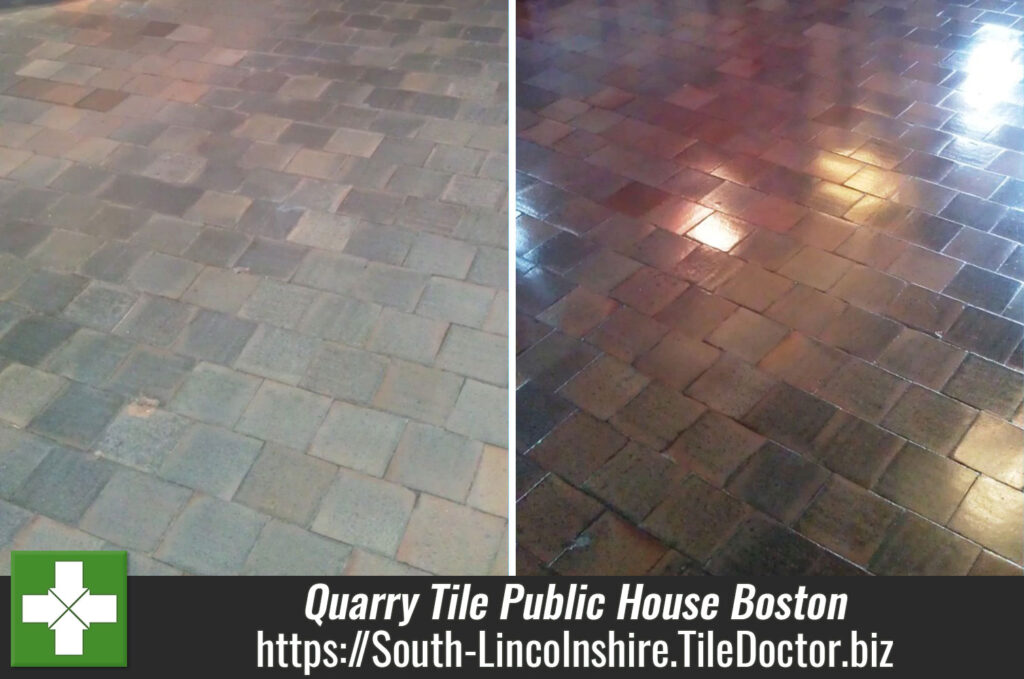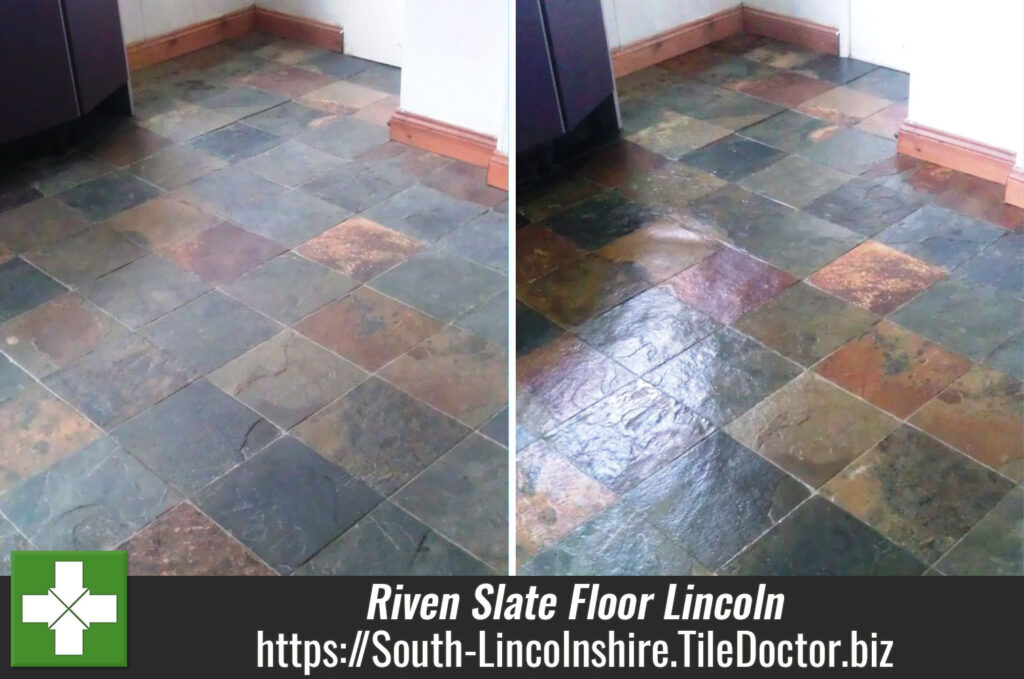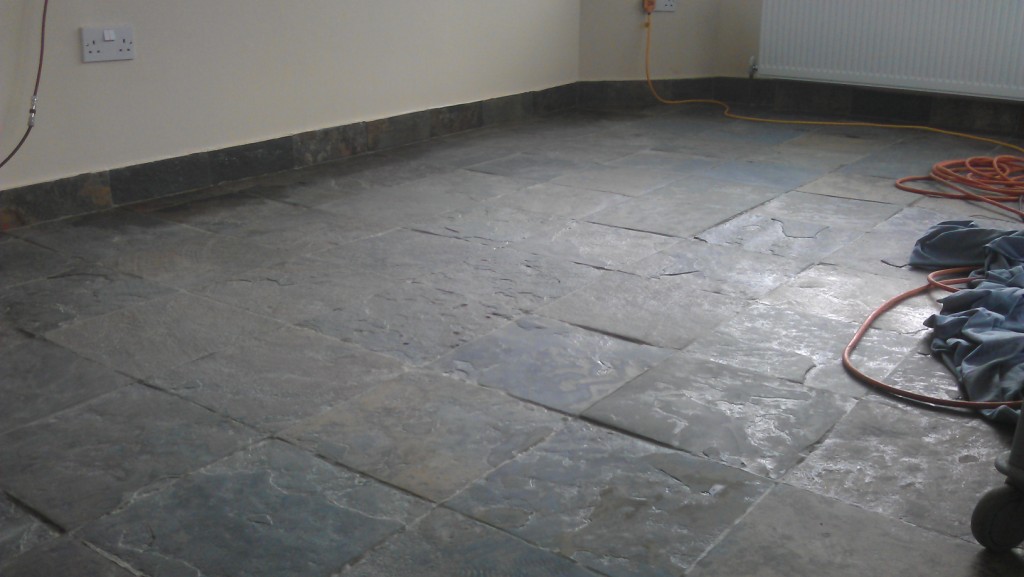Replacing the Sealer and Polishing a New Travertine Tiled Floor in Boston
A regular customer from Boston got in touch with us before Christmas to help with a Travertine floor they had laid in their front room. It turns out that they were so impressed with our previous work that they had decided to replace their lounge carpet with more Travertine.
Unfortunately, however the new travertine floor turned out dull and lack lustre despite the tiler putting a sealer on after fitting. Unhappy with the floor appearance I was asked if the floor could be re-finished to match their original Travertine floor that I had worked on previously.

I visited the property to survey the new floor and came up with a plan to strip off the current sealer, polish the stone and then re-seal with the same product that I used previously. They were happy for me to go ahead and we set a date for the work to start which would take two days.
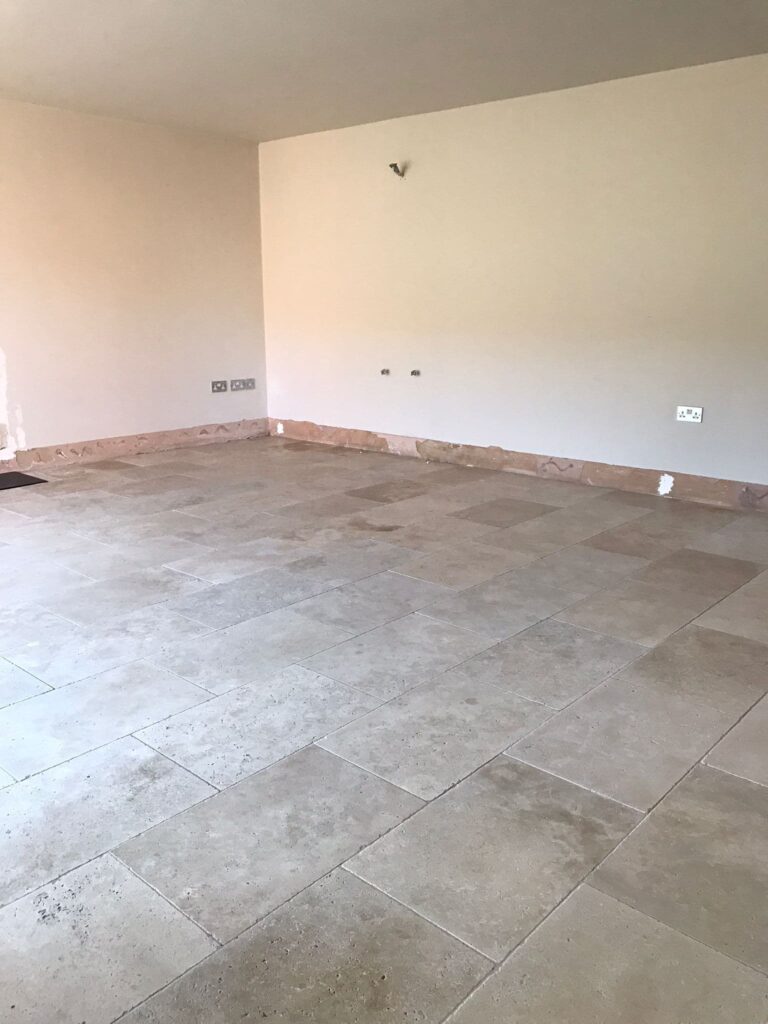
Cleaning and Burnishing a Travertine Tiled Floor
I returned on the agreed date and spent the first day burnishing the new Travertine floor tiles with a set of burnishing pads of different grits. Work starts with a coarse 400-grit pad, attached to a rotary floor buffer. Using water to lubricate the process the pad is run over each tile several times removing the sealer and any remaining dirt in the process.
Afterwards the floor was rinsed using our Rotovac system which applies water under high pressure to the floor dislodging the soils and then extracts the dirty water off the floor at high speed. The burnishing process was then repeated with the finer 800-grit and 1500-grit pads which start building the polish on the stone.
After a final rinse the process was repeated using a very fine 3000-grit pad which is applied dry to the floor using only a little water sprayed onto the tile. This last pad is the final step in the polishing process and leaves a lovely, honed finish on the stone.
During the polishing however it became apparent that the Travertine tiles contained a lot more holes that the other floor. These holes or pits as they are often called are a natural feature of this stone however, they do trap dirt easily so I agreed to fill them. I use a flexible filler for this which is colour matched to the stone and then to go off, I also left a floor dryer system in place overnight to assist with this and further drying out the tiles.

Sealing a Travertine Tiled Floor
Returning the following morning the floor was tested the flooring with a damp meter to make sure it was fully dry. All was well and it was ready to seal with our quality impregnating sealer Tile Doctor Colour Grow which protects the floor from within whilst enhancing the natural colours and tones in the stone. Three coats of sealer were used to ensure the tiles were fully sealed and the result proved to be a good match to their other Travertine floor.
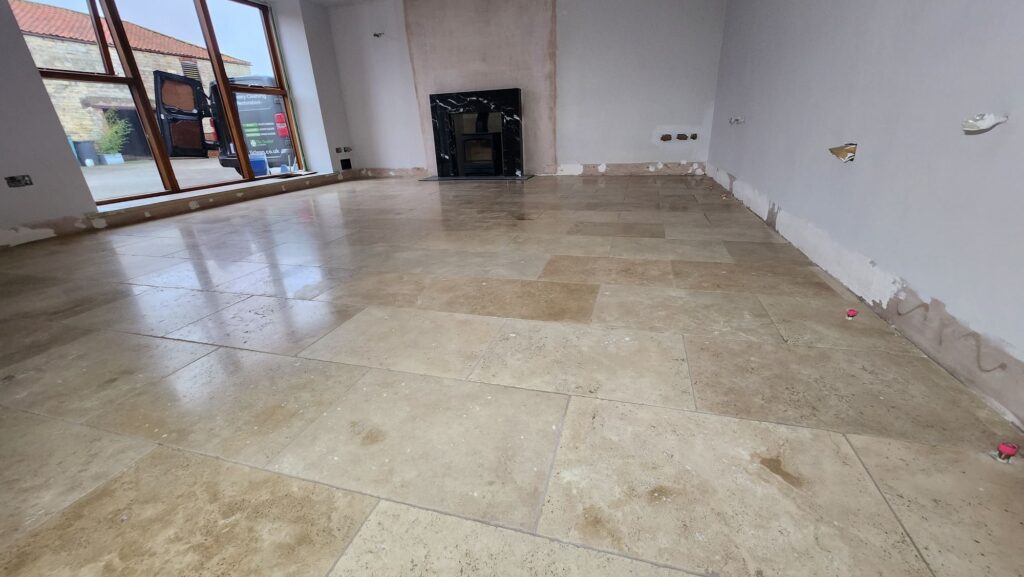
The customer was over the moon with the results and I took time afterwards to remind them about the best way to maintain the floor. For polished stone floors like this one I recommended Tile Doctor Stone Soap which will help maintain the patina on both Travertine floors.

Professional Tile Cleaning, Burnishing and Sealing for a Travertine Tiled Kitchen Floor in Sleaford
Replacing the Sealer and Polishing a New Travertine Tiled Floor in Boston Read More »

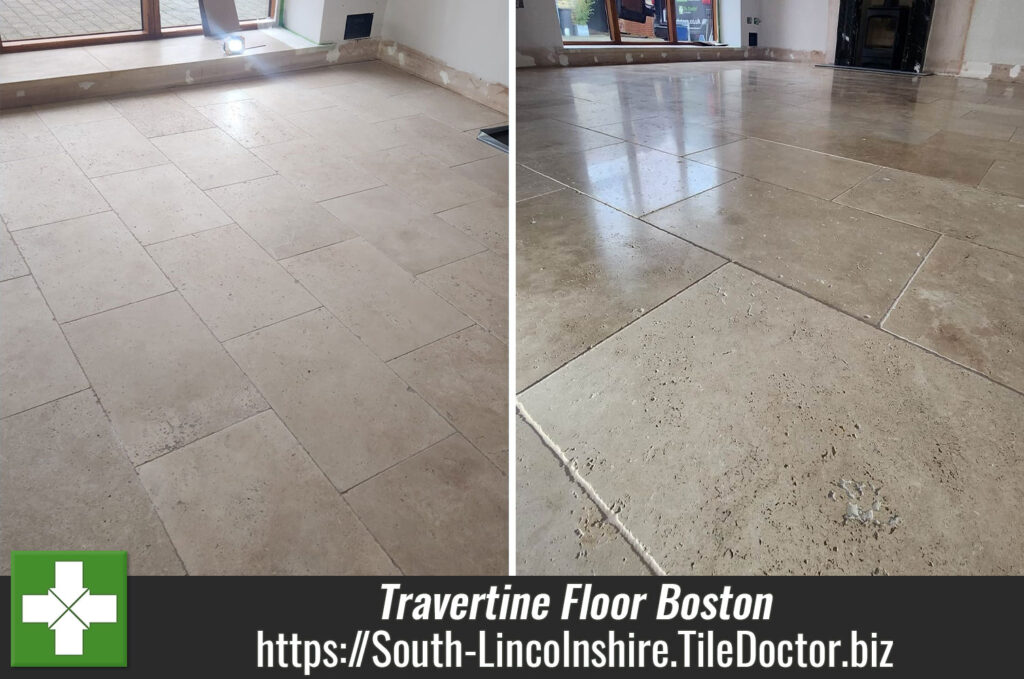






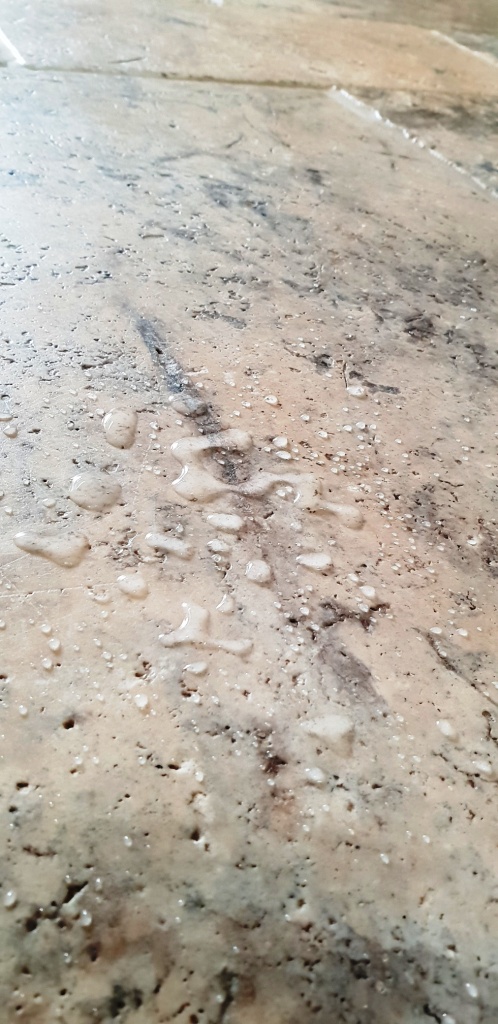


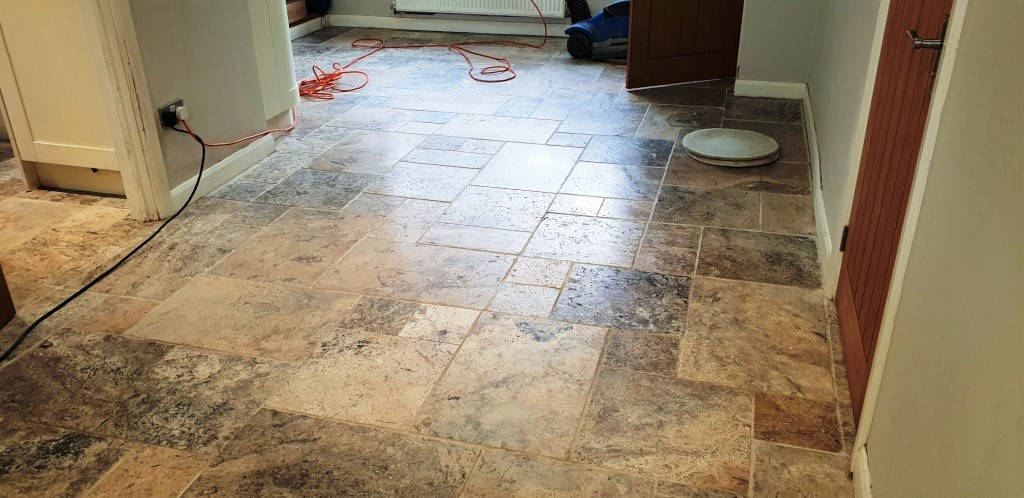
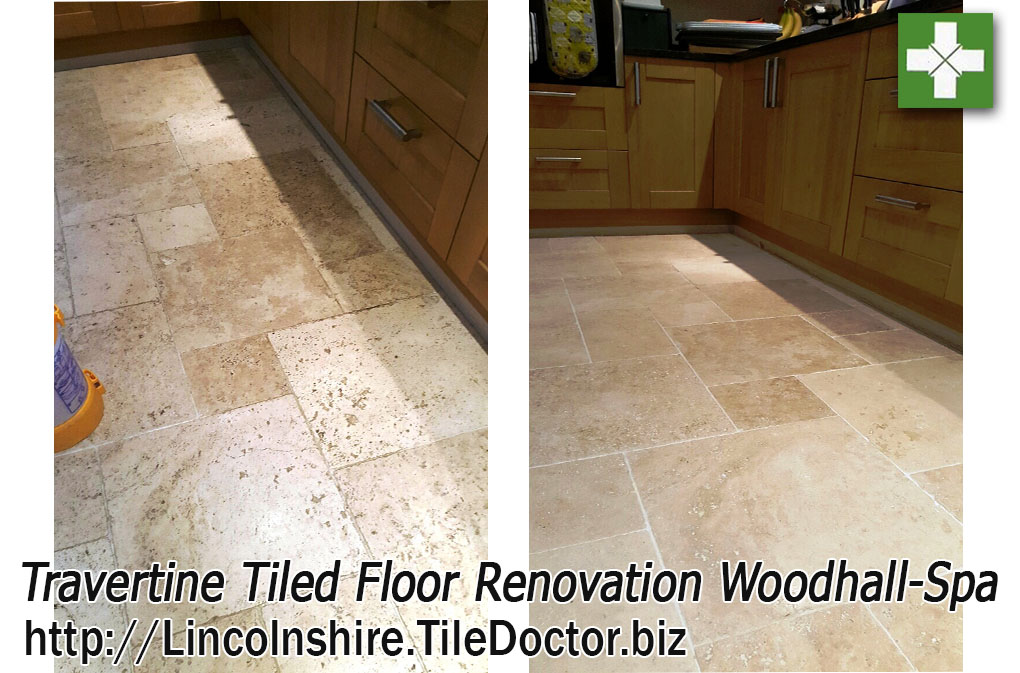

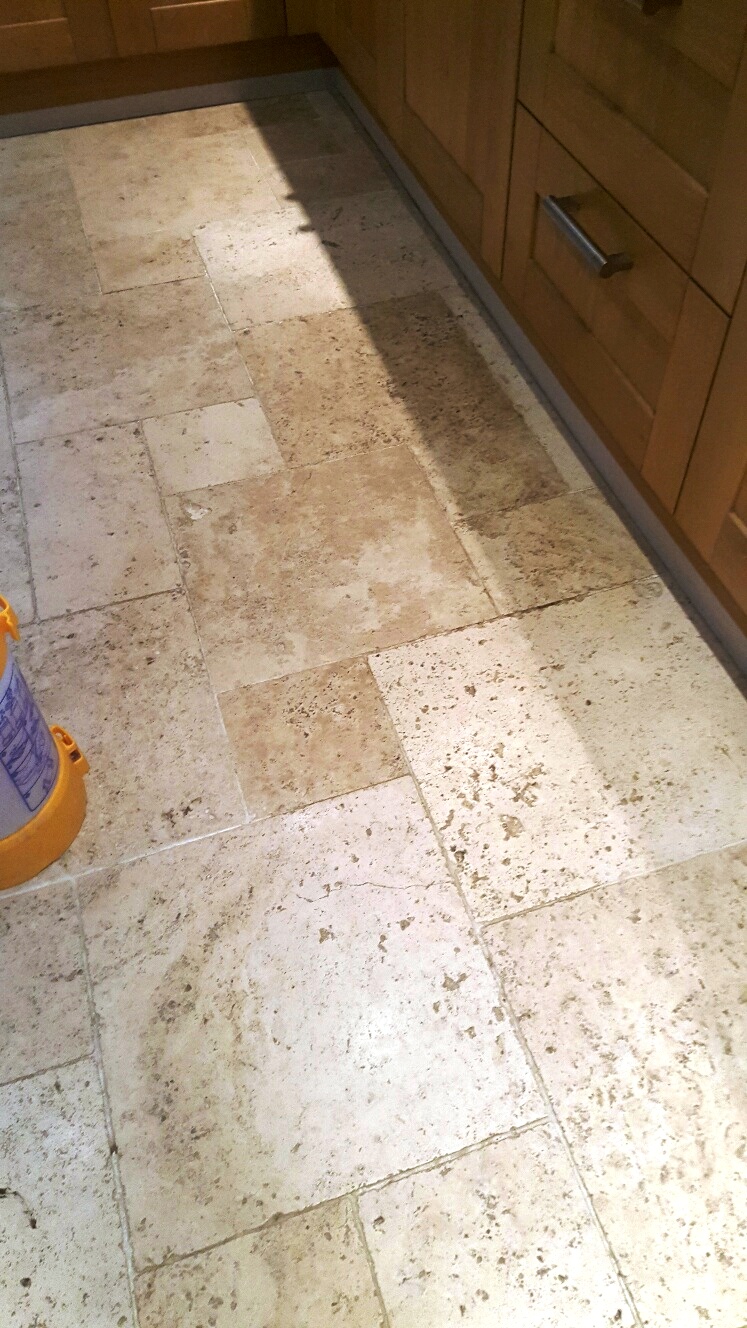

 Ensuring the floor is bone dry before sealing is important as I needed to seal the tiles the next day, and a small amount of excess moisture can cloud the sealer and damage its performance.
Ensuring the floor is bone dry before sealing is important as I needed to seal the tiles the next day, and a small amount of excess moisture can cloud the sealer and damage its performance.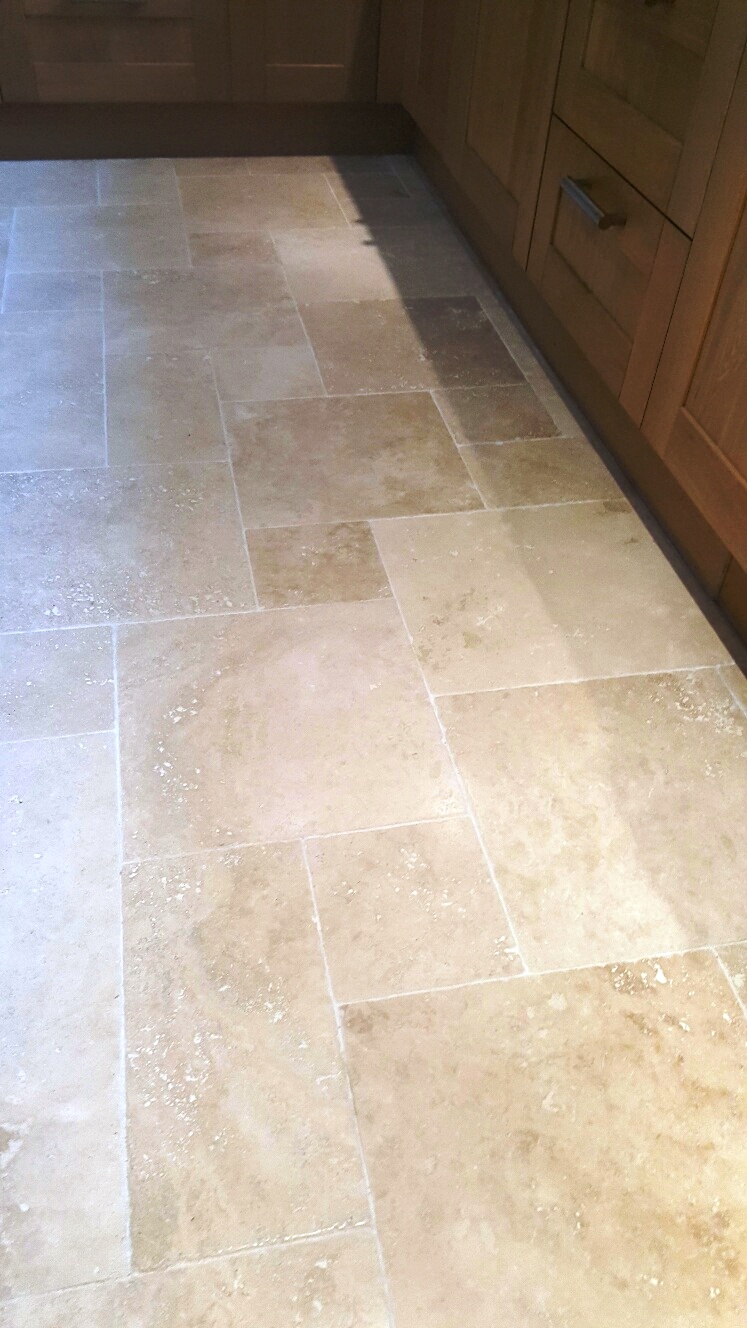 I think you will agree the floor now looks much better, certainly the customer was very happy with the work and left the following feedback:
I think you will agree the floor now looks much better, certainly the customer was very happy with the work and left the following feedback: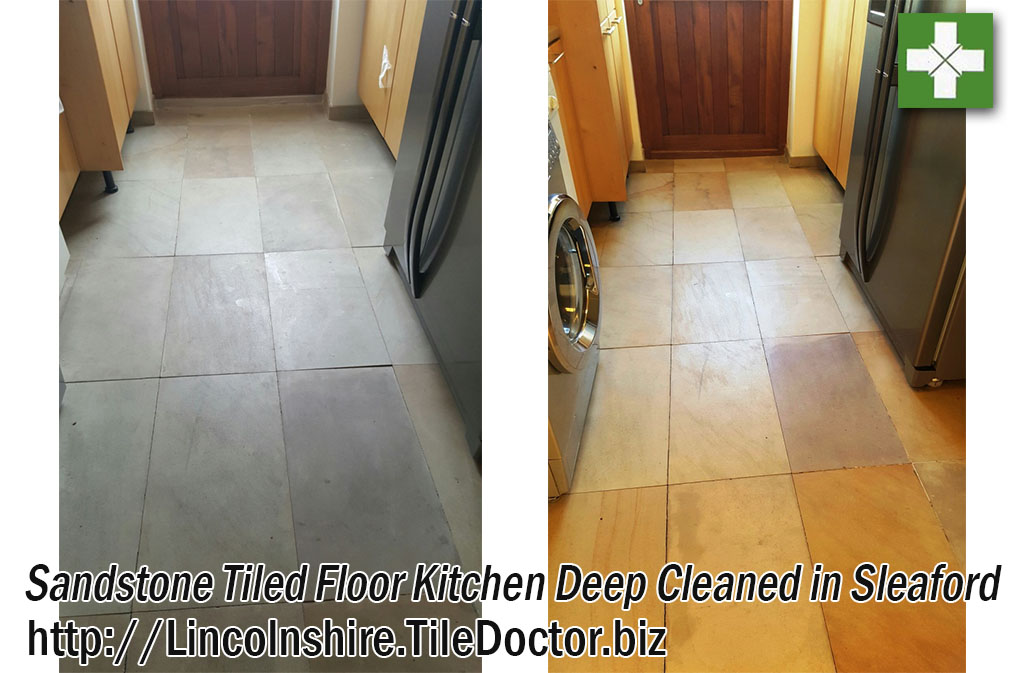





 After two coats of Colour Grow were applied, the transformation was well and truly complete. The customer was also well and truly happy. After eight years, the Sandstone tiles were restored to better than their original condition.
After two coats of Colour Grow were applied, the transformation was well and truly complete. The customer was also well and truly happy. After eight years, the Sandstone tiles were restored to better than their original condition. One question I often get asked is how do you know when your sealer has worn down. The answer is to conduct a water test on your tiles, if the water forms a bubble on the surface of the tile as in the photo below then it shows the sealer is doing its job.
One question I often get asked is how do you know when your sealer has worn down. The answer is to conduct a water test on your tiles, if the water forms a bubble on the surface of the tile as in the photo below then it shows the sealer is doing its job.
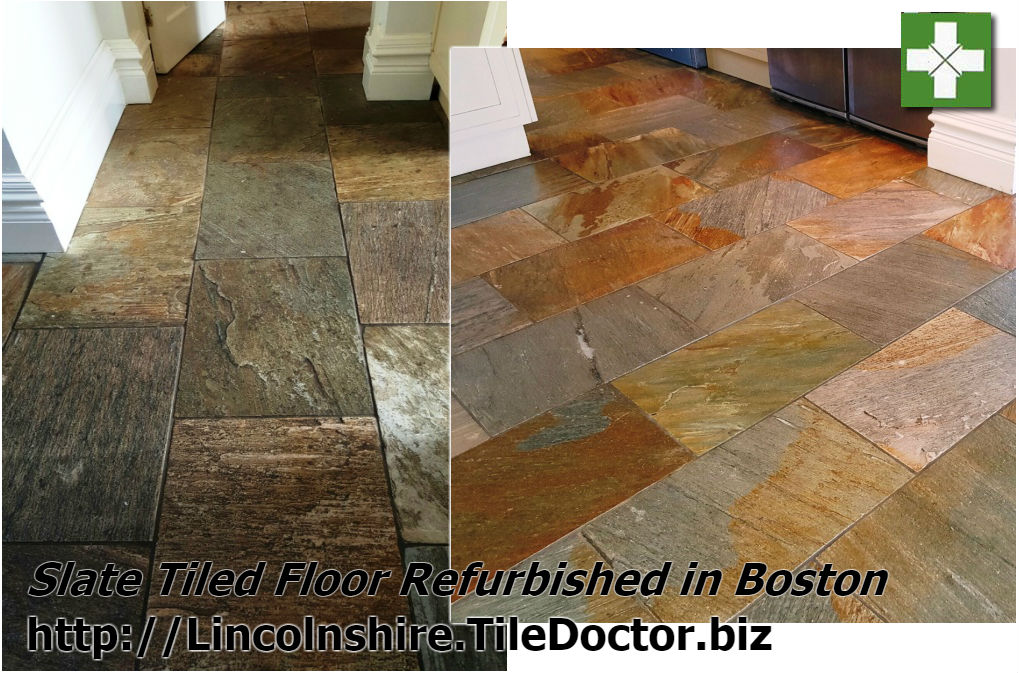
 The property owner couldn’t figure out the best way to improve the situation and so called me in to see what could be done. Upon inspecting the tiles first hand I decided that the best course of action would be a very deep clean and the application of a fresh sealant to offer long-term protection against ingrained dirt.
The property owner couldn’t figure out the best way to improve the situation and so called me in to see what could be done. Upon inspecting the tiles first hand I decided that the best course of action would be a very deep clean and the application of a fresh sealant to offer long-term protection against ingrained dirt.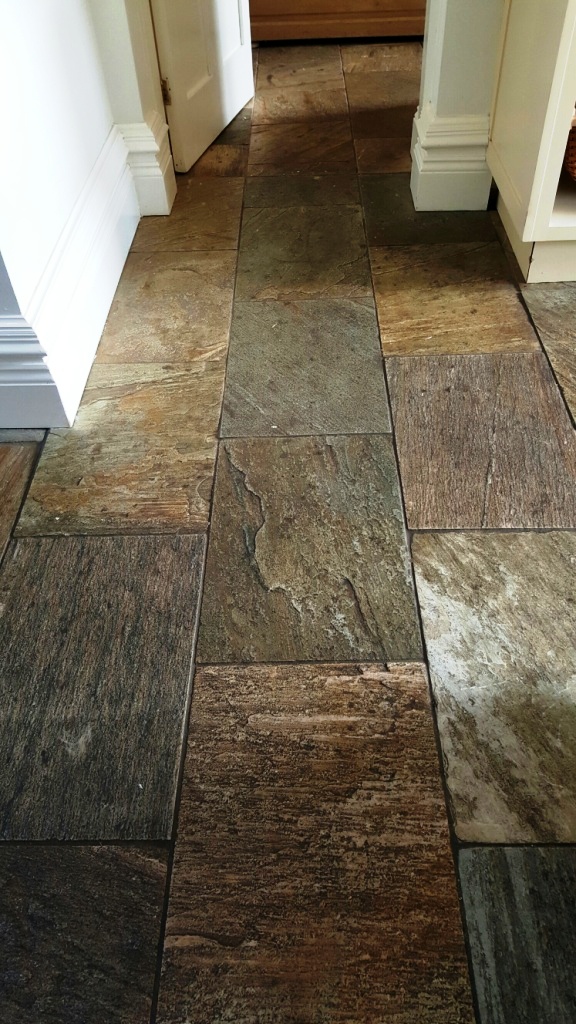
 Satisfied that the floor had been cleaned as throughly as possible, I then installed several turbo dryers to thoroughly dry the flooring, allowing it to be ready for sealing the next day. Efficient drying was especially important here due to the amount of water used in the cleaning process; many tiled floor owners will already know that sealant cannot be applied if any moisture remains.
Satisfied that the floor had been cleaned as throughly as possible, I then installed several turbo dryers to thoroughly dry the flooring, allowing it to be ready for sealing the next day. Efficient drying was especially important here due to the amount of water used in the cleaning process; many tiled floor owners will already know that sealant cannot be applied if any moisture remains.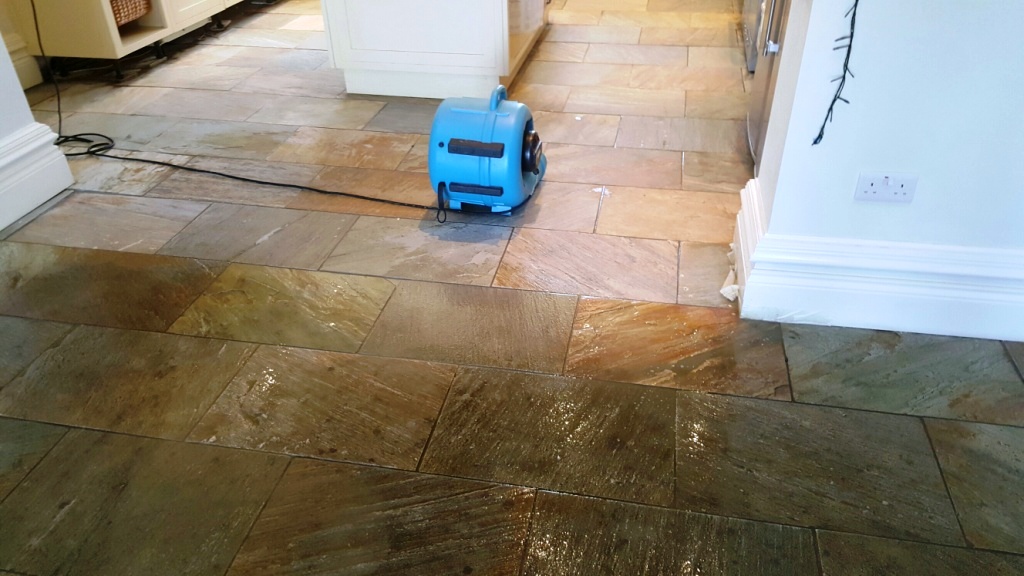
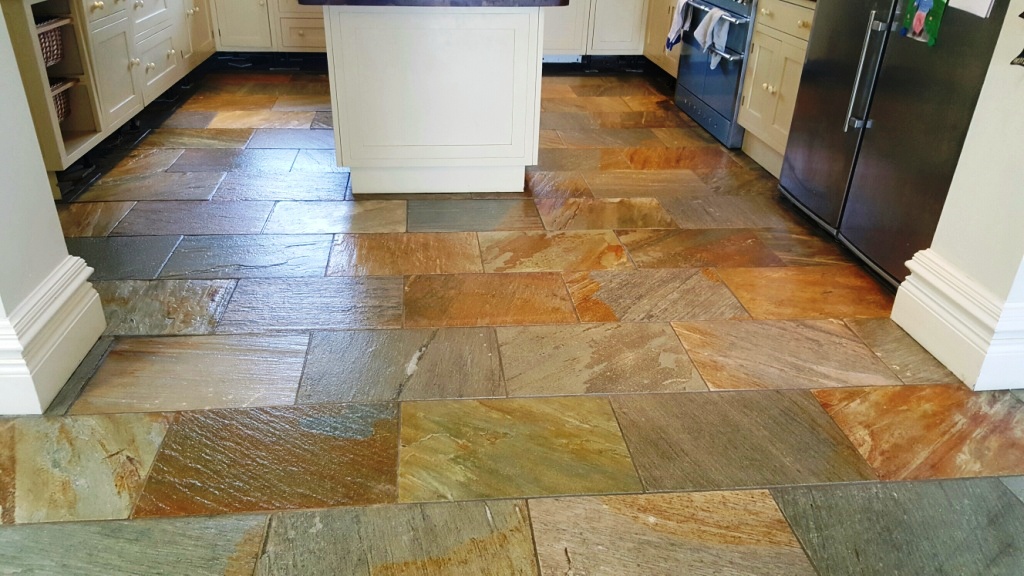 Looking at the photos of the floor before and after my work you can really get an idea of the transformation achieved in a short space of time. What a difference! The property owners were very pleased with the results, especially now that they are aware of the best way to keep their lovely Riven Slate tiles clean and protected.
Looking at the photos of the floor before and after my work you can really get an idea of the transformation achieved in a short space of time. What a difference! The property owners were very pleased with the results, especially now that they are aware of the best way to keep their lovely Riven Slate tiles clean and protected.
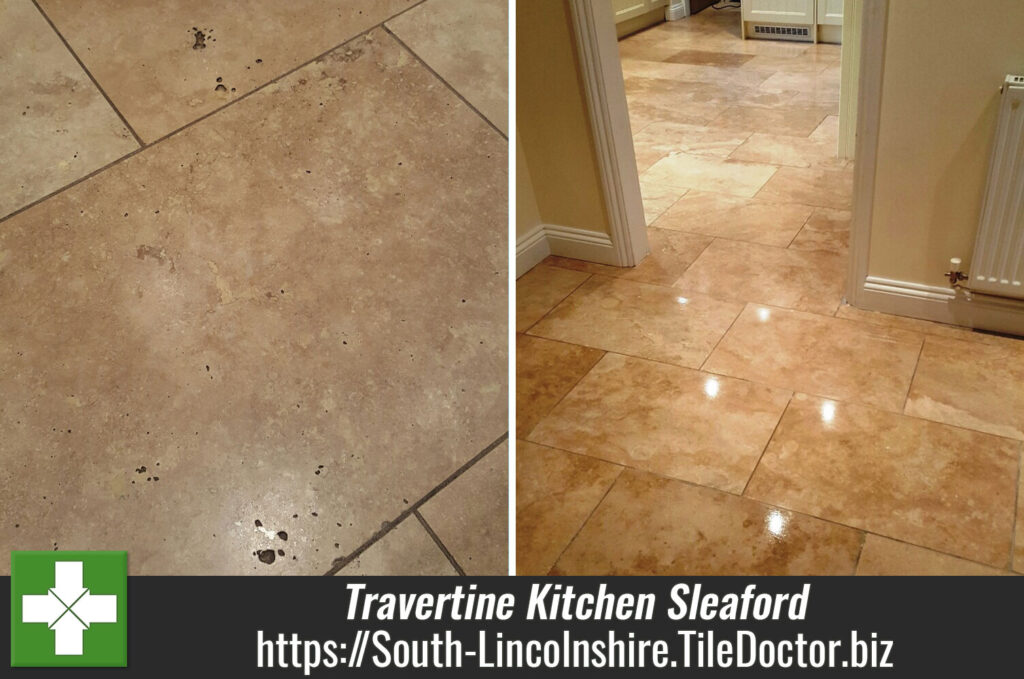

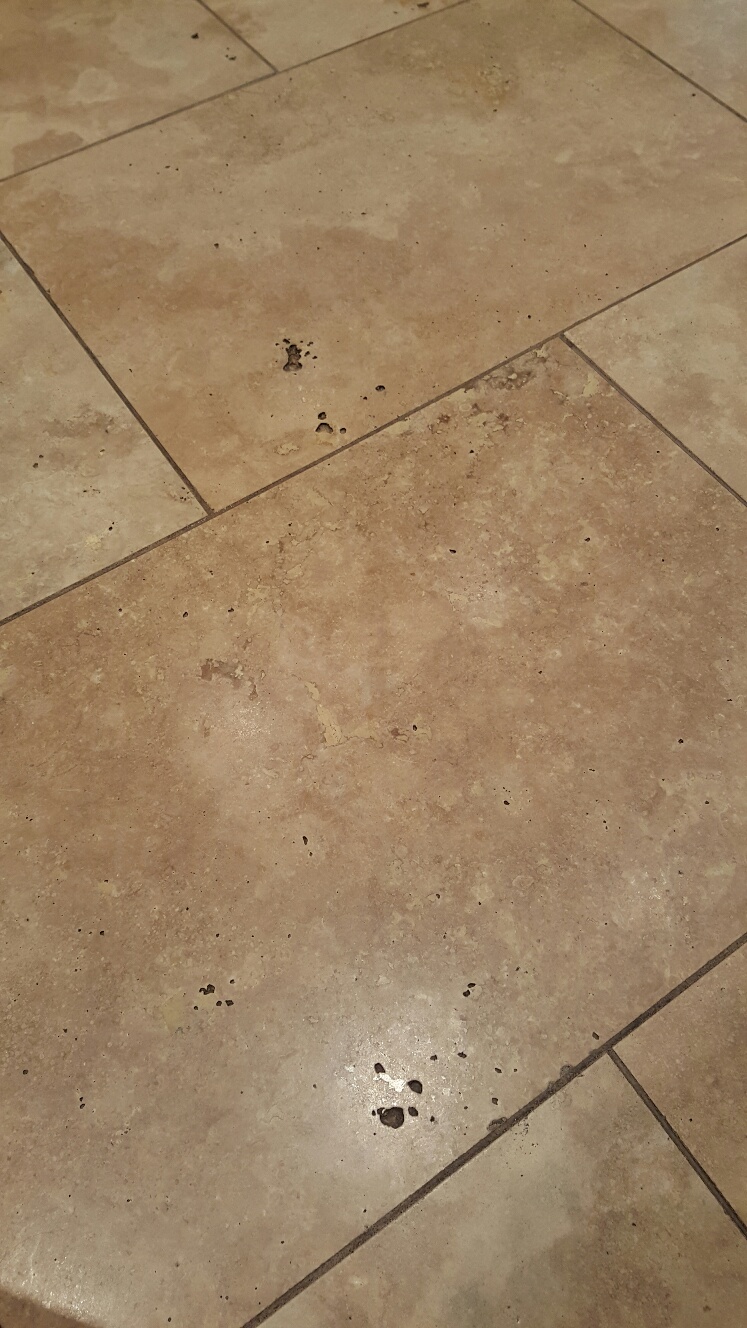
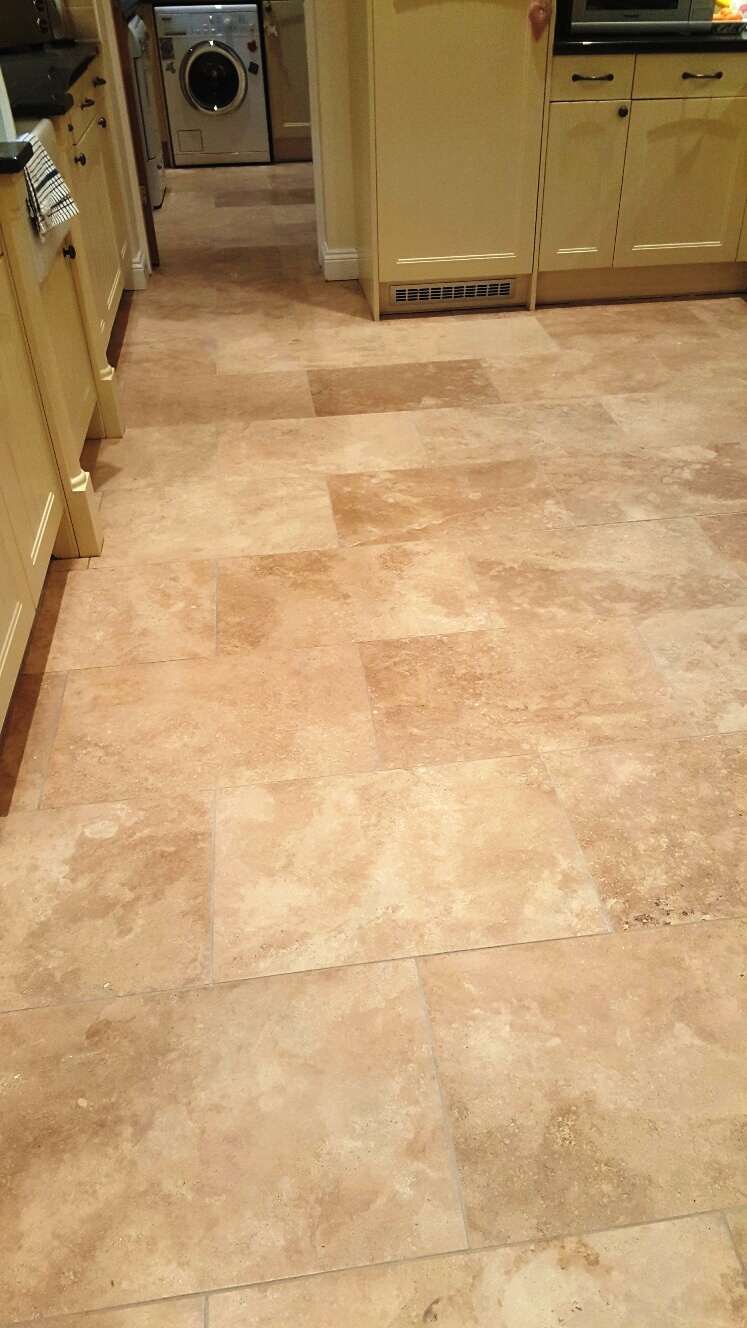 To round off the first day of the restoration, I used a flexible matching filler to fill up any pitted holes present on the surface of the tiles. Following this, I installed a turbo dryer to make sure the floor would dry fully overnight, and be ready to seal the following day.
To round off the first day of the restoration, I used a flexible matching filler to fill up any pitted holes present on the surface of the tiles. Following this, I installed a turbo dryer to make sure the floor would dry fully overnight, and be ready to seal the following day.




 My choice of sealer was
My choice of sealer was 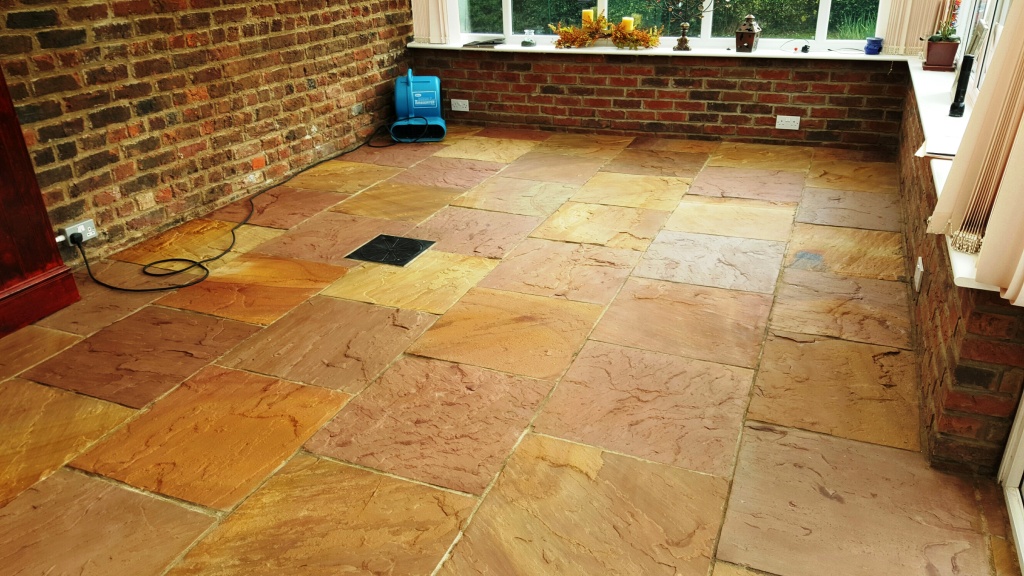 My client was delighted with the results and I think you will agree the floor looks transformed and much more appealing. Additionally the sealer is now protecting the stone from staining and liquids form puddles on the surface of the tile instead of soaking into its pores.
My client was delighted with the results and I think you will agree the floor looks transformed and much more appealing. Additionally the sealer is now protecting the stone from staining and liquids form puddles on the surface of the tile instead of soaking into its pores.








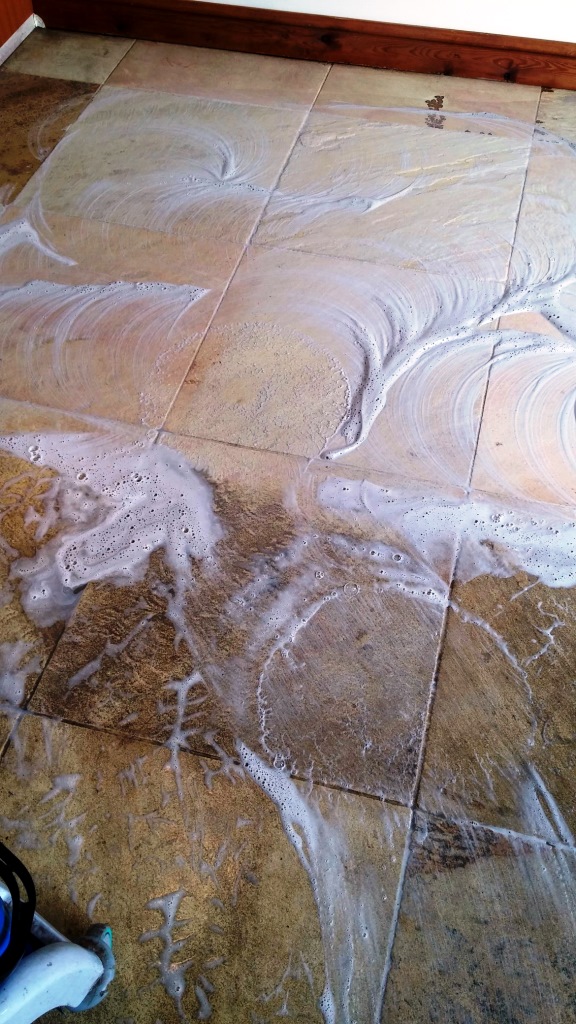 To extract the now soiled cleaning solution the floor was rinsed using water which was then extracted using our wet pick up system. Once the floor was clear we were able to see where more work was required and the process was repeated until we were happy the floor was thoroughly clean and free of any remaining sealer.
To extract the now soiled cleaning solution the floor was rinsed using water which was then extracted using our wet pick up system. Once the floor was clear we were able to see where more work was required and the process was repeated until we were happy the floor was thoroughly clean and free of any remaining sealer.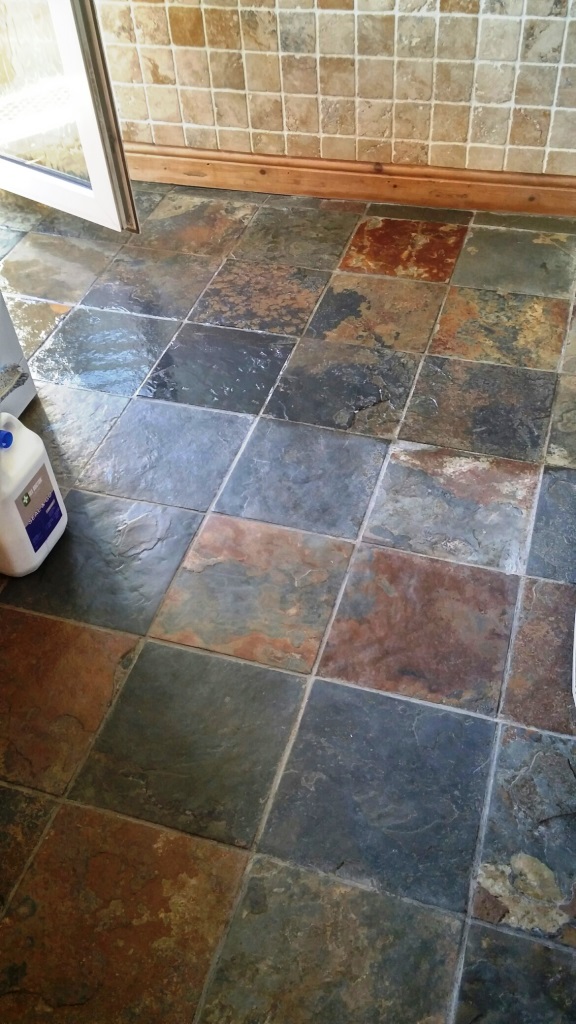 The customer was delighted with the results and left an excellent review which you can read below:
The customer was delighted with the results and left an excellent review which you can read below:







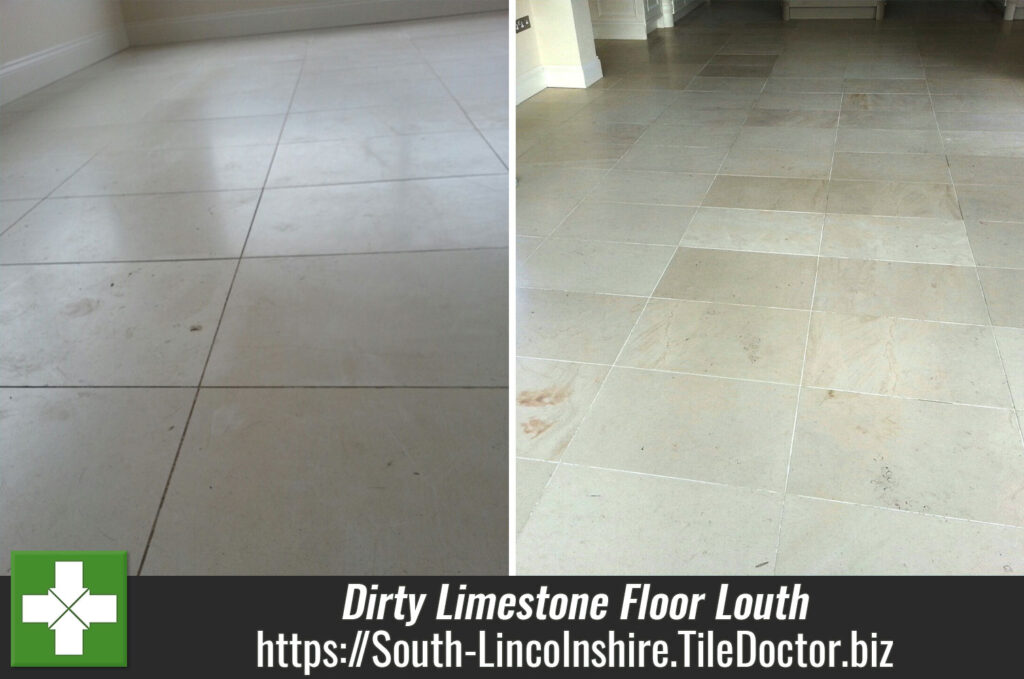






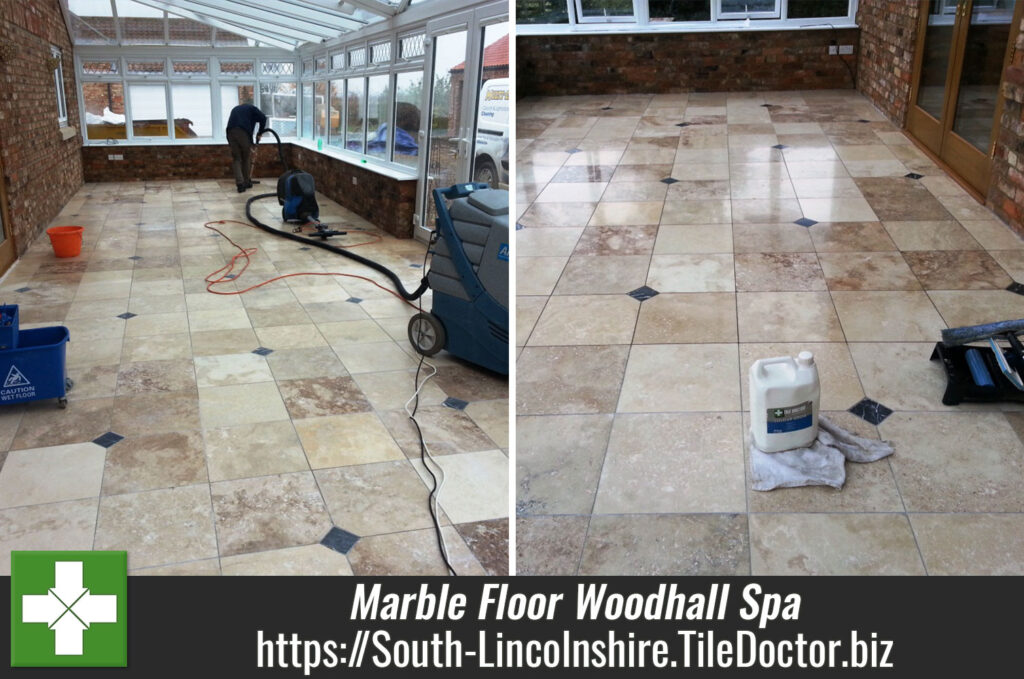

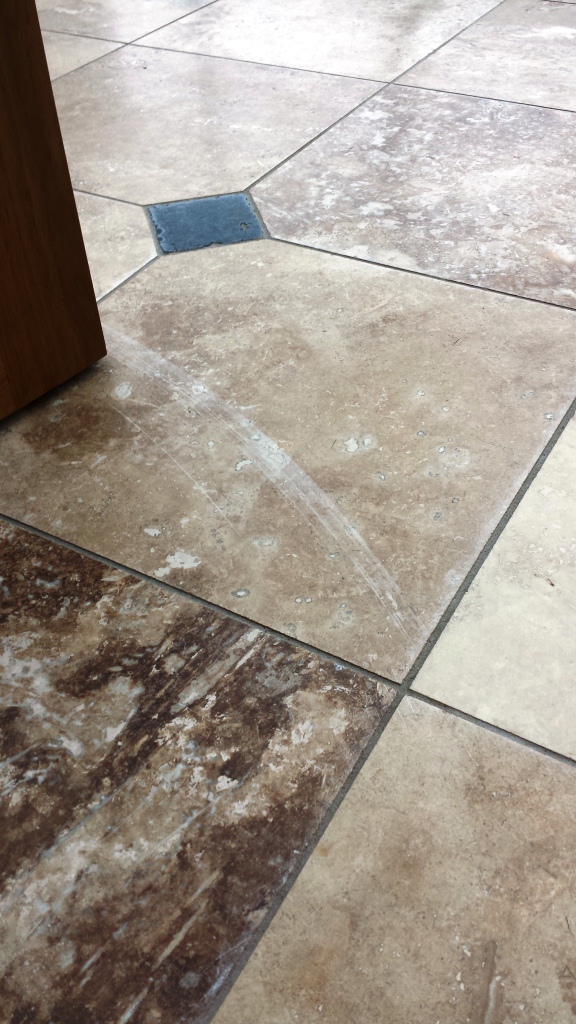
 The process starts with the coarse pad which strips back the top layer and removes sealers and dirt from the surface of the stone. The pads then become finer and finer with the last pad being a final polish that takes the tile back to near it’s originally intended shine. You can see from the photographs that we actually managed to resurface the marble, remove the scratches and we also filled in some small holes and then allowed the floor to dry overnight helped by our turbo drying system allowing for minimal drying times.
The process starts with the coarse pad which strips back the top layer and removes sealers and dirt from the surface of the stone. The pads then become finer and finer with the last pad being a final polish that takes the tile back to near it’s originally intended shine. You can see from the photographs that we actually managed to resurface the marble, remove the scratches and we also filled in some small holes and then allowed the floor to dry overnight helped by our turbo drying system allowing for minimal drying times.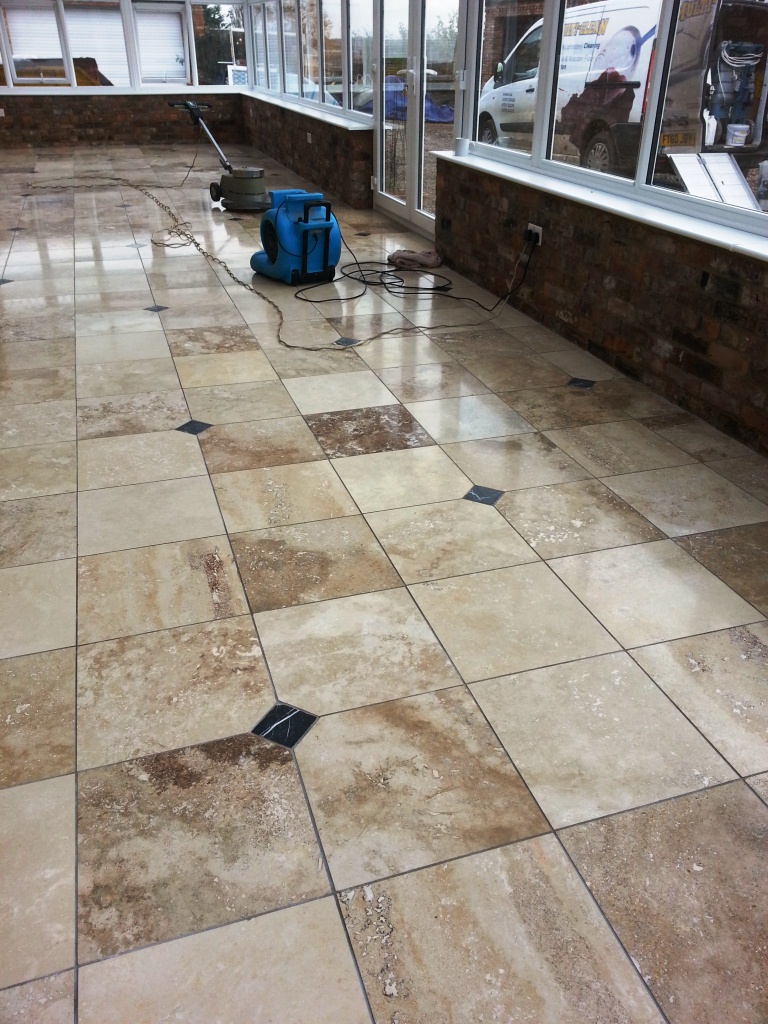
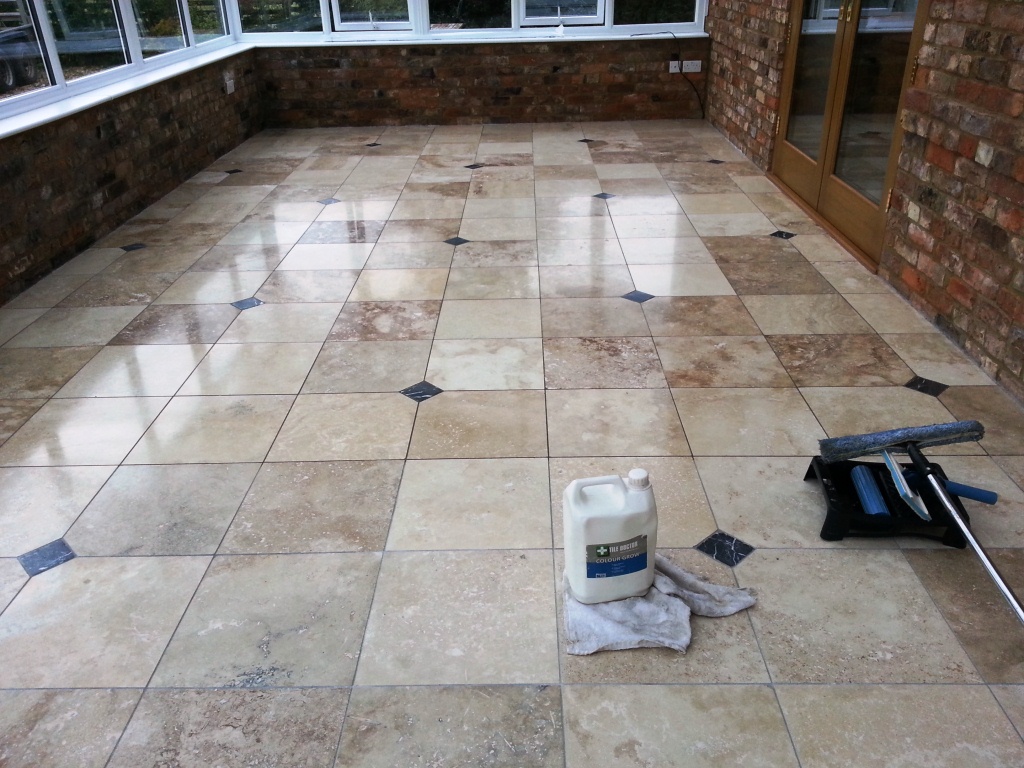 As you can see the scratches were removed and the tiles now shine and are protected and polished to a stunning finish that the customer was over the moon with and couldn’t thank us enough for the professional and excellent job on time and budget.
As you can see the scratches were removed and the tiles now shine and are protected and polished to a stunning finish that the customer was over the moon with and couldn’t thank us enough for the professional and excellent job on time and budget.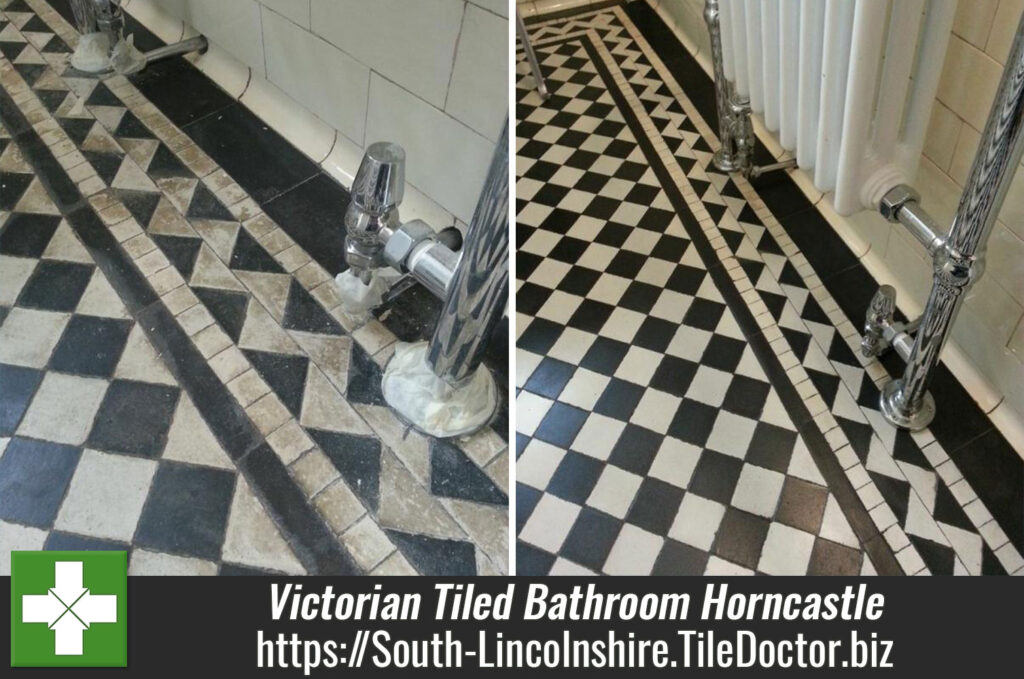



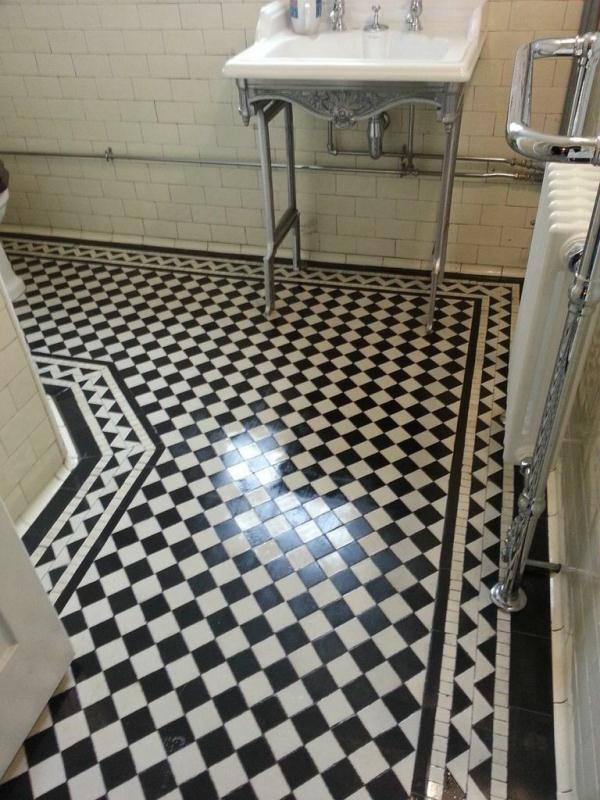
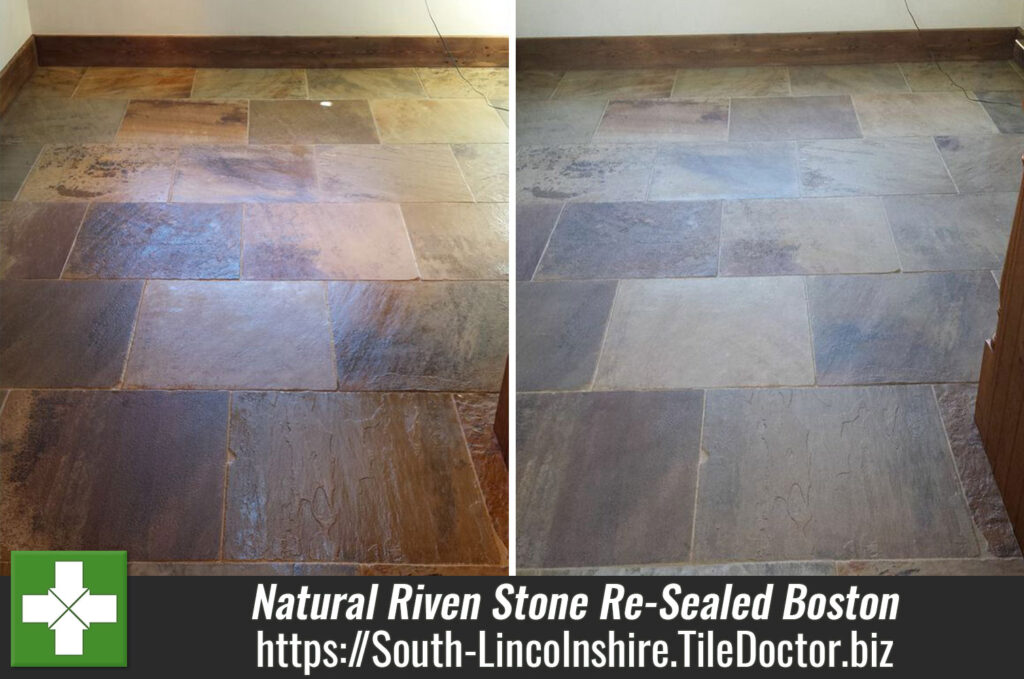
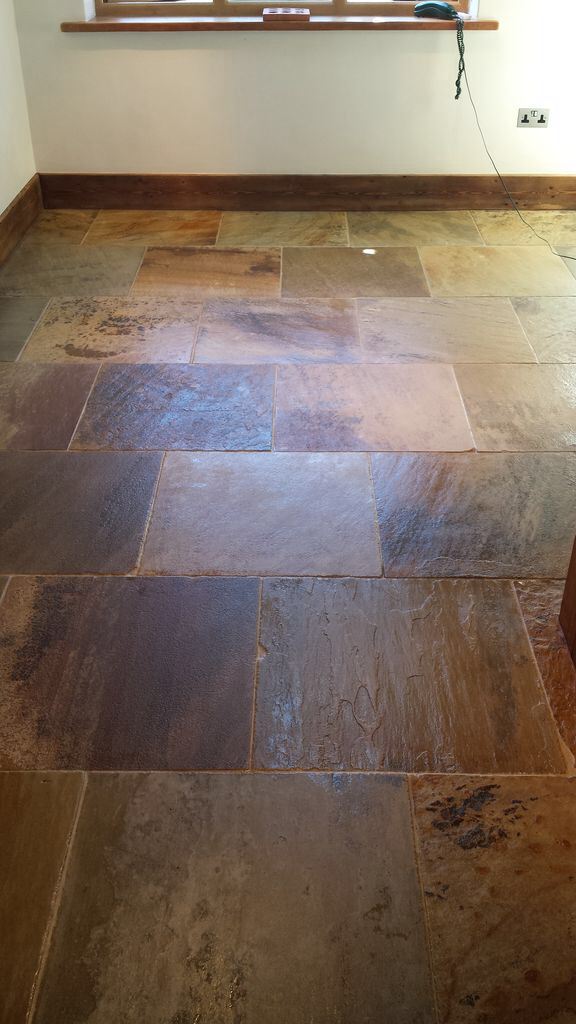

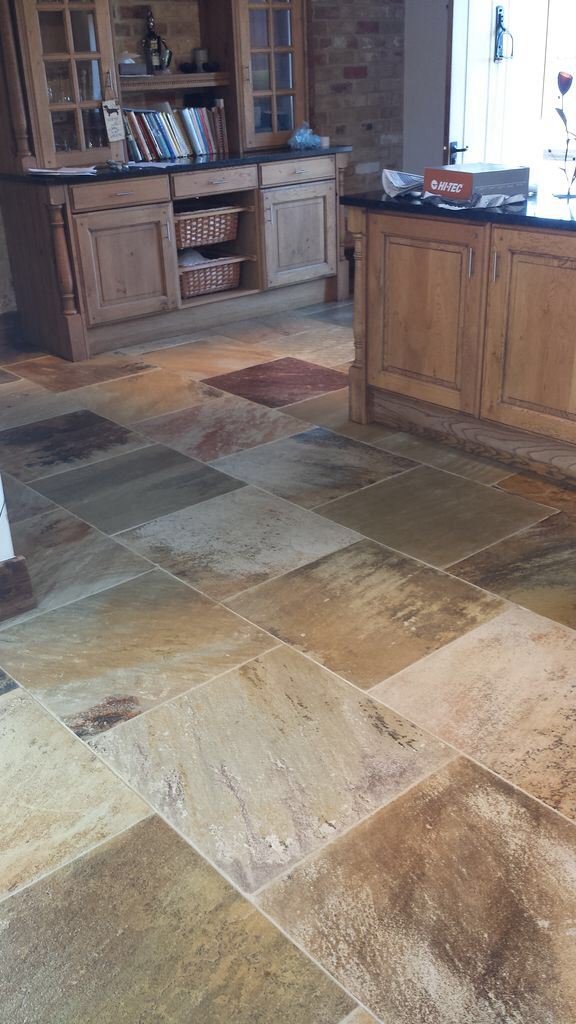 The customer was delighted with the results.
The customer was delighted with the results.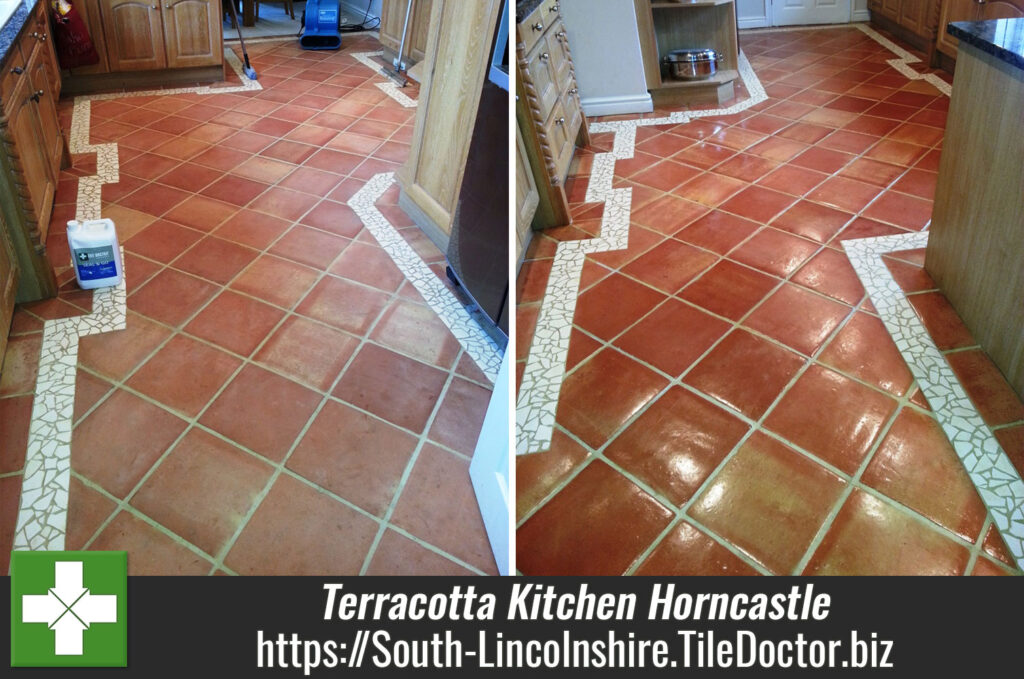
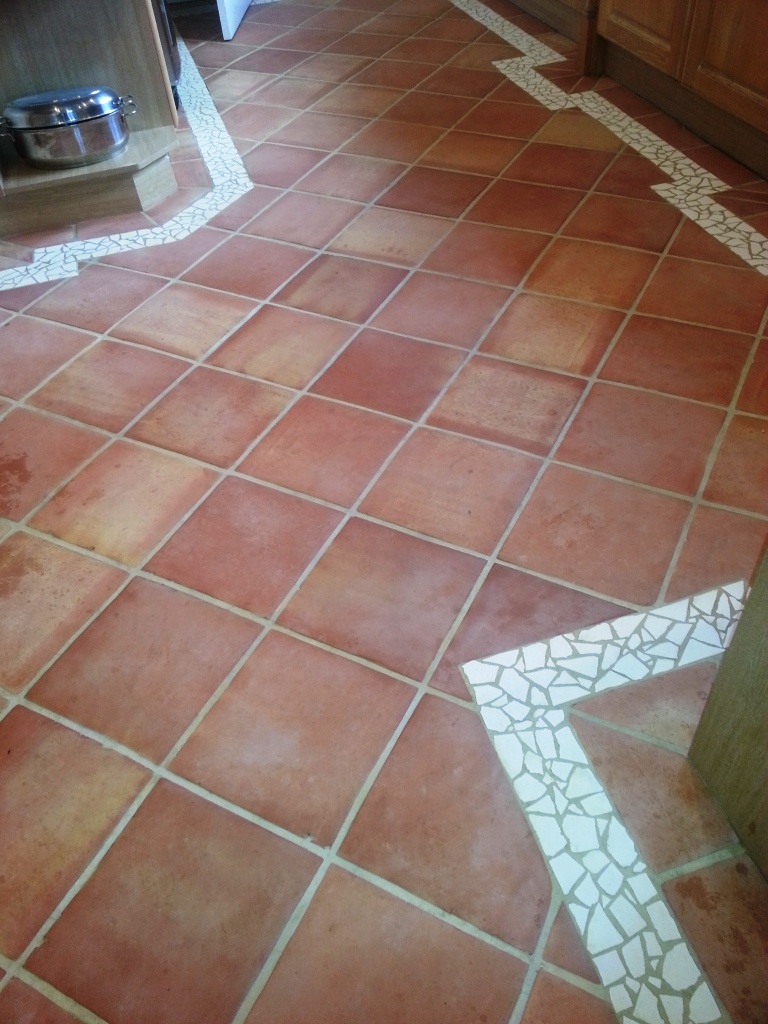
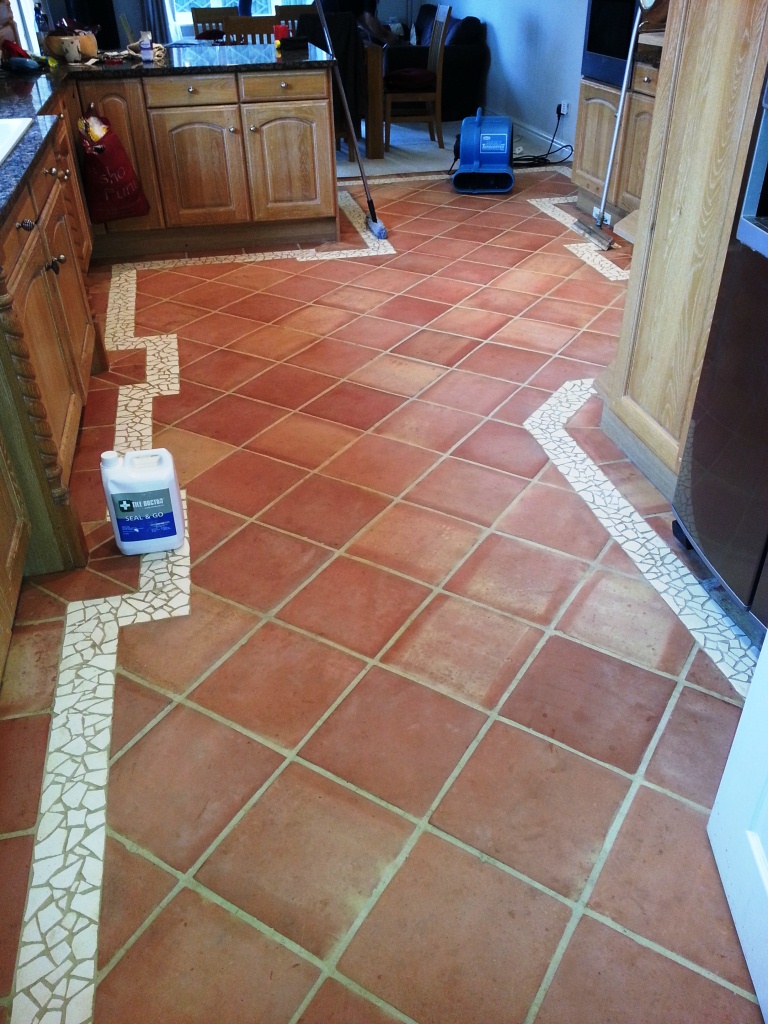
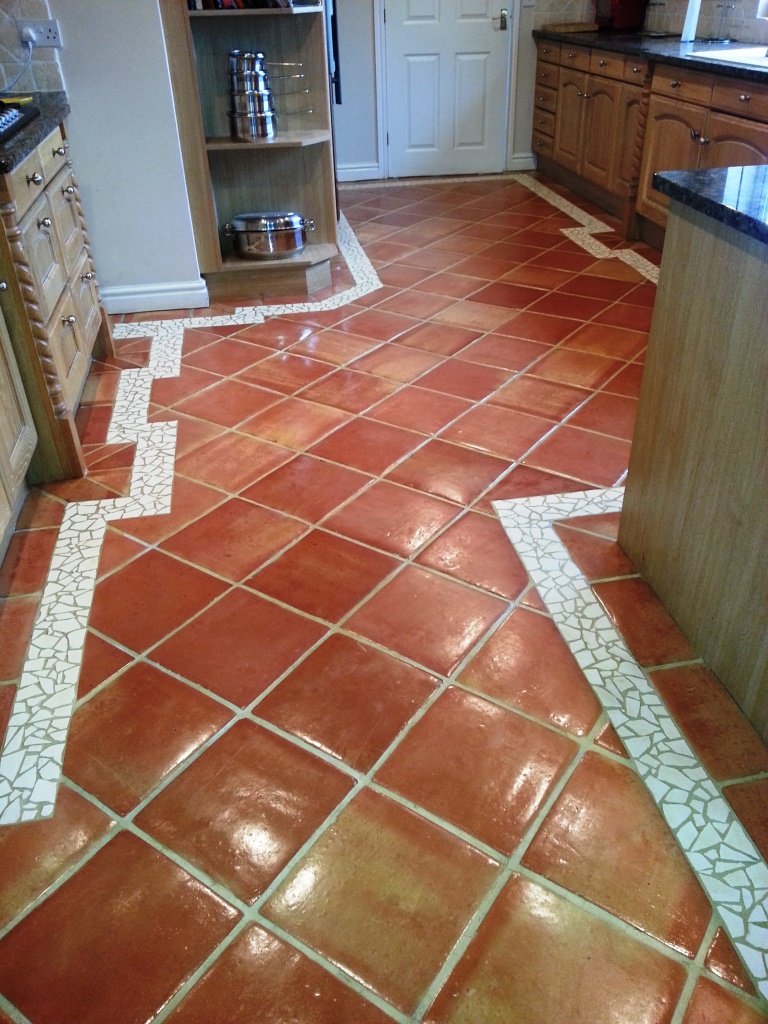 The work took two days in all, you can see the difference for yourself.
The work took two days in all, you can see the difference for yourself.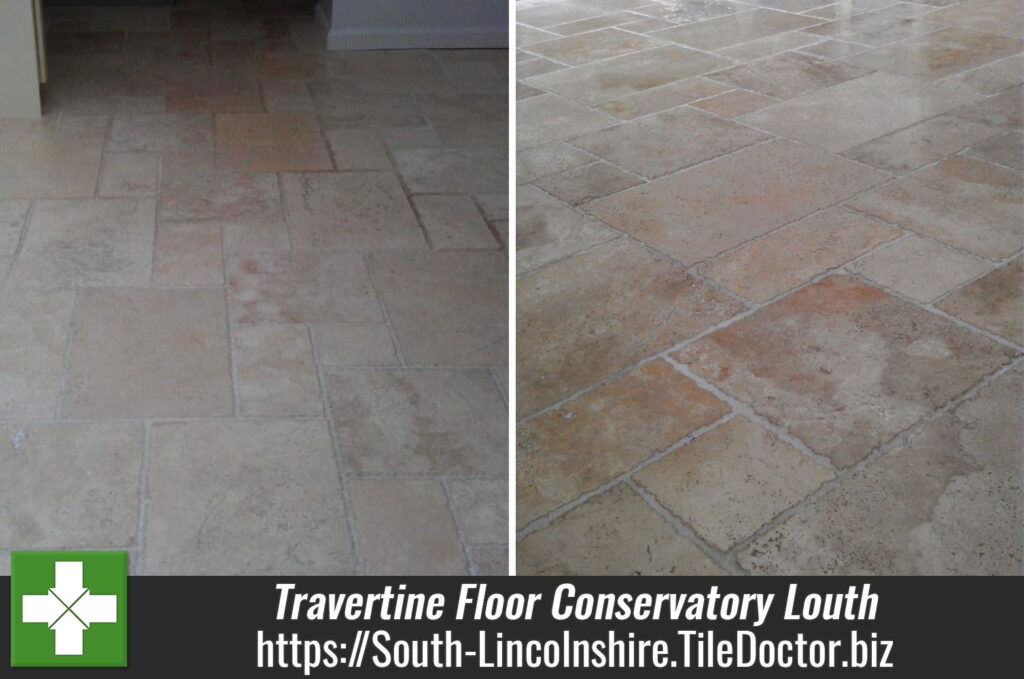


 The last step was to seal the floor which we did using two coats of
The last step was to seal the floor which we did using two coats of 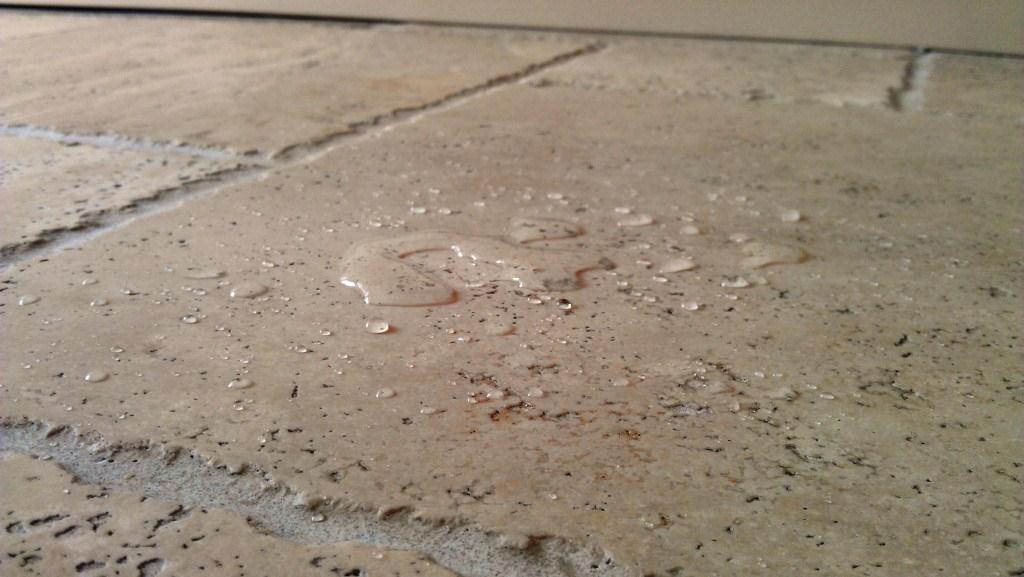 The last photograph shows the effectiveness of the sealer on the surface of the tile, without a sealer the water would have soaked into the travertine, with a sealer it bubbles on the surface allowing spillages to be removed easily before they have chance to stain the stone.
The last photograph shows the effectiveness of the sealer on the surface of the tile, without a sealer the water would have soaked into the travertine, with a sealer it bubbles on the surface allowing spillages to be removed easily before they have chance to stain the stone.

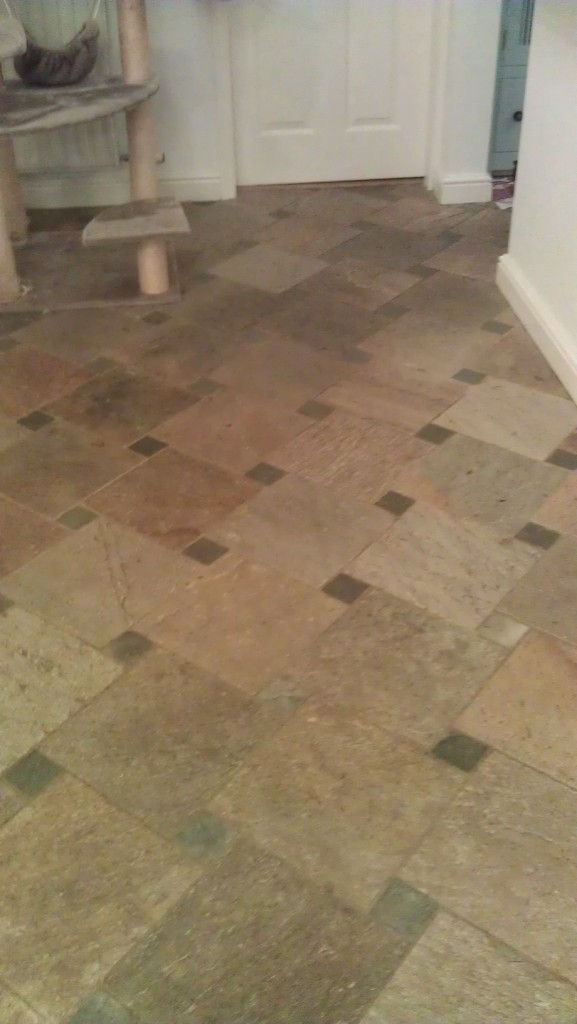
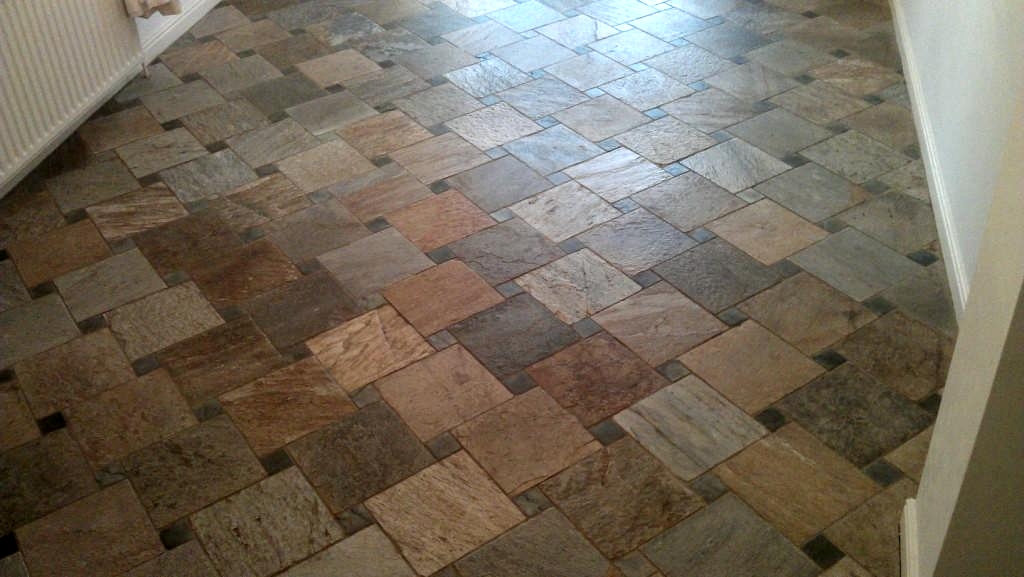 The job took two days in total and the customer was absolutely delighted with the improvement in the floor.
The job took two days in total and the customer was absolutely delighted with the improvement in the floor.